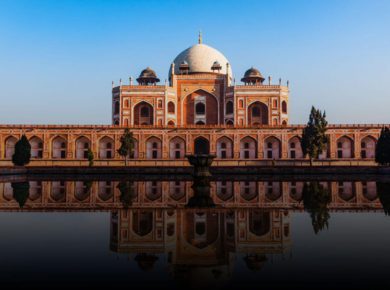Gupta Age Art & Culture
Guptas
Guptas were Bramhanical by Religion (Hindus) with special devotion to Vishnu. They showed exemplary tolerance for both Buddhism and Jainism. Gupta Coins – king on one side & goddess on the other.
Gupta Age
- Golden Age of Indian Architecture
- Described as ‘classic’ in sense of degree of perfection it achieved
- Also marked as the climax stage of Buddhist caves & monasteries esp. in western central India
- Nagara & Dravidian styles of Temple making evolved during this period
- Mural paintings of Ajanta, which mainly depicted life stories of Buddha as in Jtaka stories belong to this period
Sculpture
- One new school was added i.e. Sarnath school of sculpture
- Noteworthy example is Sultanganj Buddha (7.5 ft in height) – (Near Bhagalpur in Bihar)
- Buddha images in Sarnath have plain transparent drapery covering both shoulders
- Halo around the head has very little ornamentation
Gupta Temple Architecture
- Gupta period marks the beginning of Indian temple architecture.
- Manuals were written regarding how to form temples.
- The Gupta temples were of five main types:
Type 1
- Square building with flat roof
- Shallow pillared porch
- Sanctum (garbhagriha) at the center of the temple
- A single entrance & porch (Mandapa)
- Mandapa appears to originate 1st from here
- Vishnu Varaha temples at Eran (MP)

Type 2
- Square temple with a squat tower (shikhara) above;
- Pillared approach, a high platform at the base
- ladkhan at Aihole (Karnataka)

Type 3
- An elaboration of the first type
- Addition of an ambulatory (paradakshina) around the sanctum
- Sometimes a second story is present
- Dasavatara temple (Deogarh, Jhansi)
- Most unique achievement of this stage was “Curvilinear tower” i.e. “Shikhara”.
- “Nagara Style” temple making is said to be the success of third stage of temple making.
![]()
Type 4
- Rectangular temple with an apsidal back
- Barrel-vaulted roof above
- Ex. Kapoteswara temple at Cezarla (Andhra Pradesh)

Type 5
- Circular temples with shallow rectangular projection
- Maniyar Math shrine at Rajgir, Bihar

Gupta Literature
- Sanskrit became primary language in Gupta period
- Ramayana & Mahabharata were compiled during this period
| Kalidasa | Abhigyanshakuntalam, Malvikagnimitram, Vikramorvasiya, Kumarsambhava, Raghuvamsa, Ritusamhara, Meghaduta |
| Vishakadatta | Mudrarakshash & Devi – Chandraguptam |
| Vishnusharma | Panchtantra stories |
| Sudraka | Mrich – chakatika (Little clay art or toy cart) |
| Amarsimha | Amarkosha (Lexicon in sanskrit) |
| Dandin | Kavyadarsa & Desa – kumarcharita |
Gupta Science & Technology
| Aryabhatta | Aryabhatiyam, Suryasidhhanta |
| Varahmitra | Panch sidhhanta (5 astronomical system) Brihadsamhita, Brihadjataka (Astrology) |
| Vagbhata | Ashtangasamgraha Summary of 8 branches of Medicine |








